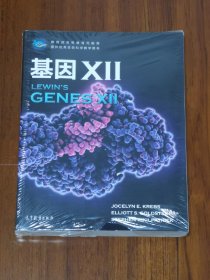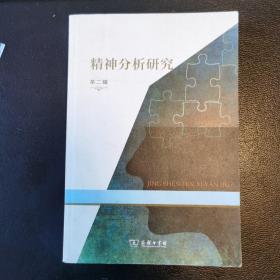
现代量子力学(第2版)(英文版)9787519272968
正版图书,可开发票,请放心购买。
¥ 77.76 7.9折 ¥ 99 全新
仅1件
广东广州
认证卖家担保交易快速发货售后保障
作者樱井纯 拿波里塔诺
出版社世界图书出版公司
ISBN9787519272968
出版时间2020-05
装帧平装
开本16开
定价99元
货号30891072
上书时间2024-07-27
- 店主推荐
- 最新上架
商品详情
- 品相描述:全新
- 商品描述
-
目录
Foreword to the First Edition
Preface to the Revised Edition
Preface to the Second Edition
In Memoriam
1 I Fundamental Concepts
1.1 The Stern-Gerlach Experiment
1.2 Kets, Bras, and Operators
1.3 Base Kets and Matrix Representations
1.4 Measurements, Observables, and the Uncertainty Relations
1.5 Change of Basis
1.6 Position, Momentum, and Translation
1.7 Wave Functions in Position and Momentum Space
2 I Quantum Dynamics
2.1 Time-Evolution and the Schr6dinger Equation
2.2 The Schr6dinger Versus the Heisenberg Picture
2.3 Simple Harmonic Oscillator
2.4 Schr6dinger's Wave Equation
2.5 Elementary Solutions to Schr6dinger's Wave Equation
2.6 Propagators and Feynman Path Integrals
2.7 Potentials and Gauge Transformations
3 Theory of Angular Momentum
3.1 Rotations and Angular-Momentum Commutation Relations
3.2 Spin 1 Systems and Finite Rotations
3.3 SO(3), SU(2), and Euler Rotations
3.4 Density Operators and Pure Versus Mixed Ensembles
3.5 Eigenvalues and Eigenstates of Angular Momentum
3.6 Orbital Angular Momentum
3.7 Schrrdinger's Equation for Central Potentials
3.8 Addition of Angular Momenta
3.9 Schwinger's Oscillator Model of Angular Momentum
3.10 Spin Correlation Measurements and Bell's Inequality
3.11 Tensor Operators
4 Symmetry in Quantum Mechanics
4.1 Symmetries, Conservation Laws, and Degeneracies
4.2 Discrete Symmetries, Parity, or Space Inversion
4.3 Lattice Translation as a Discrete Symmetry
4.4 The Time-Reversal Discrete Symmetry
Approximation Methods
5.1 Time-Independent Perturbation Theory: Nondegenerate Case
5.2 Time-Independent Perturbation Theory: The Degenerate Case
5.3 Hydrogen-Like Atoms: Fine Structure and the Zeeman Effect
5.4 Variational Methods
5.5 Time-Dependent Potentials: The Interaction Picture
5.6 Hamiltonians with Extreme Time Dependence
5.7 Time-Dependent Perturbation Theory
5.8 Applications to Interactions with the Classical Radiation Field
5.9 Energy Shift and Decay Width
6 Scattering Theory
6.1 Scattering as a Time-Dependent Perturbation
6.2 The Scattering Amplitude
6.3 The Born Approximation
6.4 Phase Shifts and Partial Waves
6.5 Eikonal Approximation
6.6 Low-Energy Scattering and Bound States
6.7 Resonance Scattering
6.8 Symmetry Considerations in Scattering
6.9 Inelastic Electron-Atom Scattering
7 Identical Particles
7.1 Permutation Symmetry
7.2 Symmetrization Postulate
Contents
7.3 Two-Electron System
7.4 The Helium Atom
7.5 Multiparticle States
7.6 Quantization of the Electromagnetic Field
8 Relativistic Quantum Mechanics
8.1 Paths to Relativistic Quantum Mechanics
8.2 The Dirac Equation
8.3 Symmetries of the Dirac Equation
8.4 Solving with a Central Potential
8.5 Relativistic Quantum Field Theory
A Electromagnetic Units
A. 1 Coulomb's Law, Charge, and Current
A.2 Converting Between Systems
B Brief Summary of Elementary Solutions to Schr6dinger's
Wave Equation
B.1 Free Particles (V = 0)
B.2 Piecewise Constant Potentials in One Dimension
B.3 Transmission-Reflection Problems
B.4 Simple Harmonic Oscillator
B.5 The Central Force Problem [Spherically Symmetrical Potential
V = V(r)
B.6 Hydrogen Atom
C Proof of the Angular-Momentum Addition Rule Given by
Equation (3.8.38 )
Bibliography
Index
内容摘要
《现代量子力学》自问世以来以其简洁、独特的写作风格很快闻名于世,成为“圣经级”量子力学教材。这本书的精妙之处在于“抓住了量子力学的灵魂”,内容选取、教授深度、设定的读者对象与我国理工科研究生
基础理论课程“高等量子力学”非常吻合。
本书对于量力学概念的介绍与众不同,没有受制于量子力学发展的历史线索,力求从一开始就摆脱经典力学的束缚。它直接从量子力学特有的电子自旋的观测实验出发,围绕其状态的概率特征和叠加原理展开对于量子力学基本概念和基本原理的阐述。从空间平移、空间转动及时间演化等对称性变换出发,引入动量、角动量及哈密顿算符等基本力学量,讨论它们的本征值问题,它们的运动方程及与经典力学的关系,从而直接切入量子力学的核心问题。这种被称之为“用量子力学方式来思考”的做法贯穿全书,是本书最引入瞩目之处。第二版较第一版在内容上有所扩充,增加了一章专门讲述相对论量子力学。
相关推荐
— 没有更多了 —

























以下为对购买帮助不大的评价